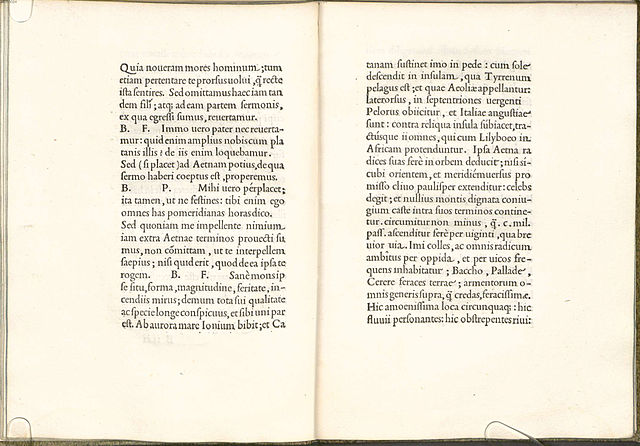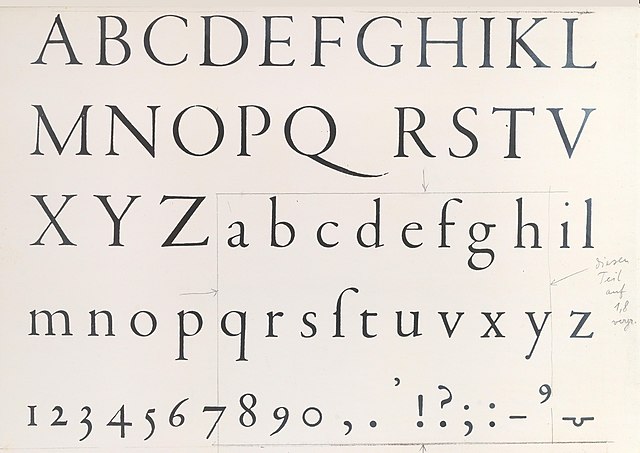Bembo is a serif typeface created by the British branch of the Monotype Corporation in 1928–1929 and most commonly used for body text. It is a member of the "old-style" of serif fonts, with its regular or roman style based on a design cut around 1495 by Francesco Griffo for Venetian printer Aldus Manutius, sometimes generically called the "Aldine roman". Bembo is named for Manutius's first publication with it, a small 1496 book by the poet and cleric Pietro Bembo. The italic is based on work by Giovanni Antonio Tagliente, a calligrapher who worked as a printer in the 1520s, after the time of Manutius and Griffo.
A page spread from De Aetna, the model for Bembo
Text sample from De Aetna
Giovanni Antonio Tagliente's 1524 writing manual, which inspired Bembo's italic. This section is engraved as a simulation of Tagliente's handwriting; other parts were set in a typeface of similar design.
A book published by Antonio Blado in 1531, using italics as was normal in the period: lower-case italics, upper-case upright capitals. The modern concept of an italic using sloped capitals had not become popular at this point.
In typography, a serif is a small line or stroke regularly attached to the end of a larger stroke in a letter or symbol within a particular font or family of fonts. A typeface or "font family" making use of serifs is called a serif typeface, and a typeface that does not include them is sans-serif. Some typography sources refer to sans-serif typefaces as "grotesque" or "Gothic" and serif typefaces as "roman".
De Aetna, printed by Aldus Manutius
Title page printed by Robert Estienne
Gros Canon type by Garamond
1611 book, with arabesque ornament border







